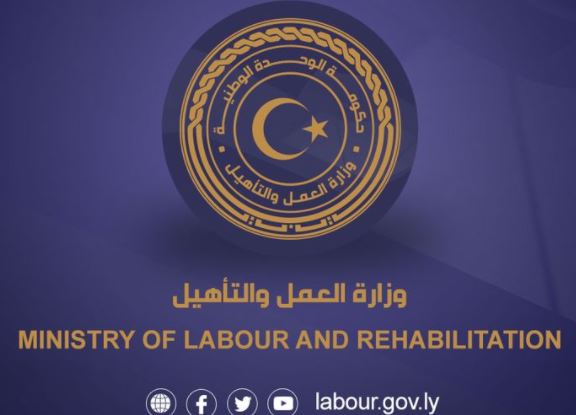Report on the Socio-Economic Impact of Undocumented Migrant Labour in Libya and its Implications for Sustainable Development Goals
Executive Summary
A statement from the Minister of Labour and Rehabilitation, Ali Al-Abed, has highlighted significant challenges posed by a large undocumented migrant workforce in Libya. These challenges directly impede progress towards several key Sustainable Development Goals (SDGs), particularly those concerning economic growth, institutional strength, and social equity. The presence of over three million undocumented workers who do not contribute to the state’s tax base creates a substantial economic and social strain, undermining national development objectives.
Challenges to SDG 8: Decent Work and Economic Growth
The current situation presents a direct challenge to achieving sustained, inclusive, and sustainable economic growth, full and productive employment, and decent work for all, as outlined in SDG 8.
- Economic Drain: The lack of formal registration and tax contributions from the majority of the migrant workforce undermines Libya’s domestic resource mobilization.
- Illicit Financial Flows: Large-scale remittances sent abroad by undocumented workers represent a significant drain on foreign currency reserves, impacting economic stability.
- Approximately US$ 5 billion was transferred in 2023.
- An estimated US$ 7 billion was transferred in 2024.
- Impact on Local Employment: The high number of undocumented workers, including an estimated one million from Egypt and one million from Niger, coincides with high unemployment rates among Libyan citizens, hindering progress towards Target 8.5 (full and productive employment).
- Erosion of Decent Work Principles: The informal nature of this labour market fails to protect labour rights and promote a safe and secure working environment for migrant workers, as stipulated in Target 8.8.
Implications for SDG 16: Peace, Justice, and Strong Institutions
The inability to effectively regulate and document the migrant workforce points to significant institutional weaknesses, which is a core concern of SDG 16. Effective and accountable institutions are necessary for sustainable development.
- Institutional Failure: Despite government efforts, only about 100,000 out of over three million foreign workers are formally registered and paying taxes, indicating a severe gap in institutional capacity and enforcement (Target 16.6).
- Rule of Law: Widespread illegal connections to the electricity grid and consumption of state-subsidized goods without contribution undermine the rule of law and place an unsustainable burden on public services.
- Security Concerns: The presence of a large, unregistered, and untracked population raises significant security challenges, complicating efforts to ensure public safety and order.
Setbacks for SDG 10: Reduced Inequalities and Social Cohesion
The economic consequences of the unregulated labour market exacerbate inequalities within Libya, directly conflicting with the aims of SDG 10.
- Decreased Purchasing Power: The devaluation of the Libyan dinar, partly driven by the drain on hard currency, lowers the standard of living and purchasing power for Libyan citizens, increasing economic inequality.
- Disorderly Migration: The situation runs counter to Target 10.7, which calls for facilitating orderly, safe, regular, and responsible migration. The current model is largely disorderly and creates negative economic and social externalities.
- Strain on Public Resources: The consumption of subsidized items (e.g., bread, cooking gas) by a non-contributing population places a disproportionate burden on the state and its citizens, further straining resources intended to support vulnerable populations and reduce poverty (SDG 1).
1. Which SDGs are addressed or connected to the issues highlighted in the article?
-
SDG 8: Decent Work and Economic Growth
The article directly addresses issues of employment and economic stability. It highlights the high unemployment rate among Libyan citizens while a large migrant workforce operates within the informal economy, which negatively affects Libya’s overall economic health.
-
SDG 10: Reduced Inequalities
The article touches upon the management of migration. The presence of over three million “illegal” or undocumented migrant workers points to a failure in creating policies for orderly, safe, and regular migration, which is a key aspect of reducing inequalities related to migration status.
-
SDG 16: Peace, Justice and Strong Institutions
The inability of the Ministry of Labour to register foreign workers and enforce tax laws reflects a weakness in institutional capacity. The article mentions that workers are “unregistered and untracked,” which poses a security risk and demonstrates a lack of effective and accountable governance.
-
SDG 17: Partnerships for the Goals
Specifically, this relates to the goal of strengthening domestic resource mobilization. The article’s central theme is the failure to collect taxes from the vast majority of migrant workers, which directly undermines the state’s ability to generate domestic revenue for public services and development.
2. What specific targets under those SDGs can be identified based on the article’s content?
-
SDG 8: Decent Work and Economic Growth
- Target 8.3: “Promote development-oriented policies that support productive activities, decent job creation… and encourage the formalization and growth of micro-, small- and medium-sized enterprises.” The article highlights the opposite of this target, describing a massive informal sector of over three million workers who are not formalized, do not pay taxes, and operate outside the state’s regulatory framework.
- Target 8.5: “By 2030, achieve full and productive employment and decent work for all…” The article explicitly states that “Libyans suffer unemployment and many cannot find jobs,” indicating a failure to achieve full and productive employment for its citizens.
-
SDG 10: Reduced Inequalities
- Target 10.7: “Facilitate orderly, safe, regular and responsible migration and mobility of people, including through the implementation of planned and well-managed migration policies.” The presence of “over three million illegal migrants” who are “unregistered and untracked” is direct evidence of the absence of well-managed migration policies, leading to the economic and security issues discussed.
-
SDG 16: Peace, Justice and Strong Institutions
- Target 16.6: “Develop effective, accountable and transparent institutions at all levels.” The Minister of Labour’s admission that “only about 100,000 foreign workers pay taxes” despite the ministry’s efforts shows a lack of institutional effectiveness in regulation and enforcement.
-
SDG 17: Partnerships for the Goals
- Target 17.1: “Strengthen domestic resource mobilization… to improve domestic capacity for tax and other revenue collection.” The article’s core issue is the failure of domestic resource mobilization, as it states that over three million workers “do not pay any taxes,” representing a massive loss of potential state revenue.
3. Are there any indicators mentioned or implied in the article that can be used to measure progress towards the identified targets?
-
Unemployment Rate
This is implied by the statement that “Libyans suffer unemployment and many cannot find jobs.” A key indicator for Target 8.5 is the national unemployment rate, and the article suggests it is a significant problem.
-
Proportion of Informal Employment
The article provides numbers that can be used to calculate this indicator. With “over three million illegal migrants” and only “about 100,000 foreign workers pay taxes,” it implies a vast informal sector. This is a direct measure related to Target 8.3.
-
Volume of Remittances as a Percentage of GDP
The article explicitly states the volume of remittances: “foreign workers transferred abroad about US$ 5 billion in 2023 and about US$ 7 billion 2024.” This data is a key indicator for monitoring capital flows related to migration (Target 10.7) and the overall economy.
-
Total Government Revenue as a Proportion of GDP
This is implied by the discussion on tax evasion. The statement that millions of workers “do not pay any taxes” directly impacts the government’s ability to collect revenue, which is the core of the indicator for Target 17.1.
-
Number of Undocumented Migrants
The article gives a figure of “over three million illegal migrants.” This number serves as a direct indicator for measuring the effectiveness of migration policies under Target 10.7.
4. Create a table with three columns titled ‘SDGs, Targets and Indicators” to present the findings from analyzing the article.
| SDGs | Targets | Indicators |
|---|---|---|
| SDG 8: Decent Work and Economic Growth | Target 8.3: Encourage the formalization of the economy. Target 8.5: Achieve full and productive employment. |
– Proportion of informal employment (Implied by 3 million undocumented workers vs. 100,000 registered). – Unemployment rate (Implied by “Libyans suffer unemployment”). |
| SDG 10: Reduced Inequalities | Target 10.7: Facilitate orderly, safe, regular and responsible migration. | – Number of undocumented migrants (Mentioned as “over three million”). – Volume of remittances (Mentioned as US$ 5-7 billion). |
| SDG 16: Peace, Justice and Strong Institutions | Target 16.6: Develop effective, accountable and transparent institutions. | – Number of registered foreign workers vs. estimated total (Implied by the failure to register and track millions of workers). |
| SDG 17: Partnerships for the Goals | Target 17.1: Strengthen domestic resource mobilization and improve tax collection. | – Government revenue from taxes (Implied by the non-payment of taxes by over 3 million workers). |
Source: libyaherald.com







